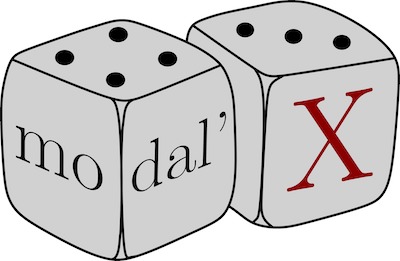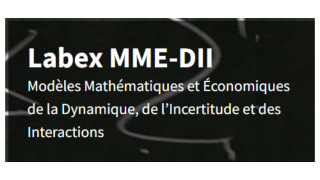[Chaire D3S] Intervention du professeur Antonio Napolitano (Université Partenope, Naples) dans le cadre du semestre thématique «Non-stationnarité, cyclo-stationnarité et applications »

Heure locale
- Fuseau horaire : America/Los_Angeles
- Date : 20 - 24 Mar 2023
- 20 - 24 Mar 2023
- Expiré!

📅 du 20 au 24 mars 2023
📍SEMESTRE THÉMATIQUE « NON-STATIONNARITÉ , CYCLO-STATIONNARITÉ ET APPLICATIONS » : INTERVENTION DU PROFESSEUR Antonio NAPOLITANO
La chaire «Data Sciences for Social Sciences – D3S » en partenariat avec les laboratoires MODAL’X (Université Paris Nanterre et LABEX MME-DII (Fondation Paris Cercy Université), organise de janvier à juin 2023 un semestre thématique sur “Non-stationnarité, cyclo-stationnarité et applications”.
Le cours du professeur Antonio Napolitano (Université Partenope, Naples)aura aura lieu du 20 au 24 mars 2023.
Pour assister à distance cliquer sur ce lien.
Le programme des séances est le suivant:
- Lundi 20 Mars (Monday 20 th of March) : 13:30-15:30
- Mardi 21 Mars ( Tuesday 21th of March) : 10:00-12:00
- Mercredi 22 Mars ( Wednesday 22 of March) : 10:00-12:00
- Jeudi 23 Mars (Thursday 23th of March) : 13h30-15h30
- Vendredi 24 Mars (Friday 24th of March) : 10:00-12:00
Contents of the Course:
- Almost-periodic functions. Characterization of continuous-time cyclostationary and almost cyclostationary processes in the strict sense. Second-order characterization in the time domain and in the frequency domain.
- Harmonizable processes. Spectral correlation property.
- Discrete-time almost-cyclostationary processes. Sampling and aliasing.
- Linear almost-periodically time-varying filtering. Estimation of statistical functions in the time and frequency domains: Mean square consistency and asymptotic complex normality. Higher-order cyclostationarity.
- Applications in radar/sonar and communications: Signal detection, synchronization, signal classification. Doppler effect. Generalizations of cyclostationarity: Generalized almost-cyclostationary processes.
- Spectrally correlated processes, Oscillatory almost-cyclostationary processes. Statistical function estimation. Application to biological signals.
REFERENCES
General content
Ombao, H., Lindquist, M., Thompson, W., & Aston, J. (2017). Handbook of neuroimaging data analysis.
EEG simulation
Granados-Garcia, G., Fiecas, M., Babak, S., Fortin, N. J., & Ombao, H. (2022). Brain waves analysis via a non-parametric Bayesian mixture of autoregressive kernels. Computational Statistics & Data Analysis, 174, 107409. https://doi.org/10.1016/j.csda.2021.107409
Multivariate spectral analysis of time series. (2019). In W. W. S. Wei, Multivariate Time Series Analysis and Applications (pp. 301–436). John Wiley & Sons, Ltd. https://doi.org/10.1002/9781119502951.ch9
Gao, X., Shen, W., Shahbaba, B., Fortin, N., & Ombao, H. (2016). Evolutionary State-Space Model and Its Application to Time-Frequency Analysis of Local Field Potentials. Statistica Sinica, 30. https://doi.org/10.5705/ss.202017.0420
Shumway, R. H., & Stoffer, D. S. (2006). Time series analysis and its applications: With R examples (2nd ed). Springer.
Artifact identification and removal
Fatt, I., & Weissman, B. A. (2013). Physiology of the eye: an introduction to the vegetative functions. Butterworth-Heinemann
Shams, T., Rahi, F., Mir, M., & Nasor, M. (2009). Home ECG system: Signal processing and remote transmission. 2009 IEEE International Symposium on Signal Processing and Information Technology (ISSPIT), 254–258. https://doi.org/10.1109/ISSPIT.2009.5407559
Delorme, A., Sejnowski, T., & Makeig, S. (2007). Enhanced detection of artifacts in EEG data using higher-order statistics and independent component analysis. NeuroImage, 34(4), 1443–1449. https://doi.org/10.1016/j.neuroimage.2006.11.004
Sweeney, K. T., McLoone, S. F., & Ward, T. E. (2013). The use of ensemble empirical mode decomposition with canonical correlation analysis as a novel artifact removal technique. IEEE Transactions on Bio-Medical Engineering, 60(1), 97–105. https://doi.org/10.1109/TBME.2012.2225427
Spectral analysis
Ombao, H., & Pinto, M. (2022). Spectral Dependence. Econometrics and Statistics. https://doi.org/10.1016/j.ecosta.2022.10.005
Ombao, H. (2019). Spectral Approach to Modeling Dependence in Multivariate Time Series. Journal of Physics: Conference Series, 1417, 012007. https://doi.org/10.1088/1742-6596/1417/1/012007
Fiecas, M., & Ombao, H. (2011). The generalized shrinkage estimator for the analysis of functional connectivity of brain signals. The Annals of Applied Statistics, 5(2A), 1102–1125. https://doi.org/10.1214/10-AOAS396
Ombao, H., & Bellegem, S. V. (2006). Coherence Analysis of Nonstationary Time Series: A Linear Filtering Point of View. 24.
Connectivity models
Ting, C.-M., Skipper, J. I., Noman, F., Small, S. L., & Ombao, H. (2022). Separating Stimulus-Induced and Background Components of Dynamic Functional Connectivity in Naturalistic fMRI. IEEE Transactions on Medical Imaging, 41(6), 1431–1442. https://doi.org/10.1109/TMI.2021.3139428
Degras, D., Ting, C.-M., & Ombao, H. (2022). Markov-switching state-space models with applications to neuroimaging. Computational Statistics & Data Analysis, 174, 107525. https://doi.org/10.1016/j.csda.2022.107525
Bourakna, A. E. Y., Pinto, M., Fortin, N., & Ombao, H. (2021). Smooth Online Parameter Estimation for time varying VAR models with application to rat’s LFP data. ArXiv:2102.12290 [Stat]. http://arxiv.org/abs/2102.12290
Pinto-Orellana, M. A., Mirtaheri, P., Hammer, H. L., & Ombao, H. (2021). SCAU: Modeling spectral causality for multivariate time series with applications to electroencephalograms. ArXiv:2105.06418 [q-Bio, Stat]. http://arxiv.org/abs/2105.06418
Dutta, C. N., Douglas, P. K., & Ombao, H. (2020). Structural Brain Asymmetries in Youths with Combined and Inattentive Presentations of Attention Deficit Hyperactivity Disorder. ArXiv:2010.13458 [q-Bio]. http://arxiv.org/abs/2010.13458
Phang, C.-R., Ting, C.-M., Noman, F., & Ombao, H. (2020). Classification of EEG-Based Brain Connectivity Networks in Schizophrenia Using a Multi-Domain Connectome Convolutional Neural Network. IEEE Journal of Biomedical and Health Informatics, 24(5), 1333–1343. https://doi.org/10.1109/JBHI.2019.2941222
Ting, C.-M., Ombao, H., Salleh, S.-H., & Latif, A. Z. A. (2020). Multi-Scale Factor Analysis of High-Dimensional Functional Connectivity in Brain Networks. IEEE Transactions on Network Science and Engineering, 7(1), 449–465. https://doi.org/10.1109/TNSE.2018.2869862
Samdin, S. B., Ting, C.-M., Ombao, H., & Salleh, S.-H. (2017). A Unified Estimation Framework for State-Related Changes in Effective Brain Connectivity. IEEE Transactions on Biomedical Engineering, 64(4), 844–858. https://doi.org/10.1109/TBME.2016.2580738
Wang, Y., Ting, C.-M., & Ombao, H. (2016). Modeling Effective Connectivity in High-Dimensional Cortical Source Signals. IEEE Journal of Selected Topics in Signal Processing, 10(7), 1315–1325. https://doi.org/10.1109/JSTSP.2016.2600023


